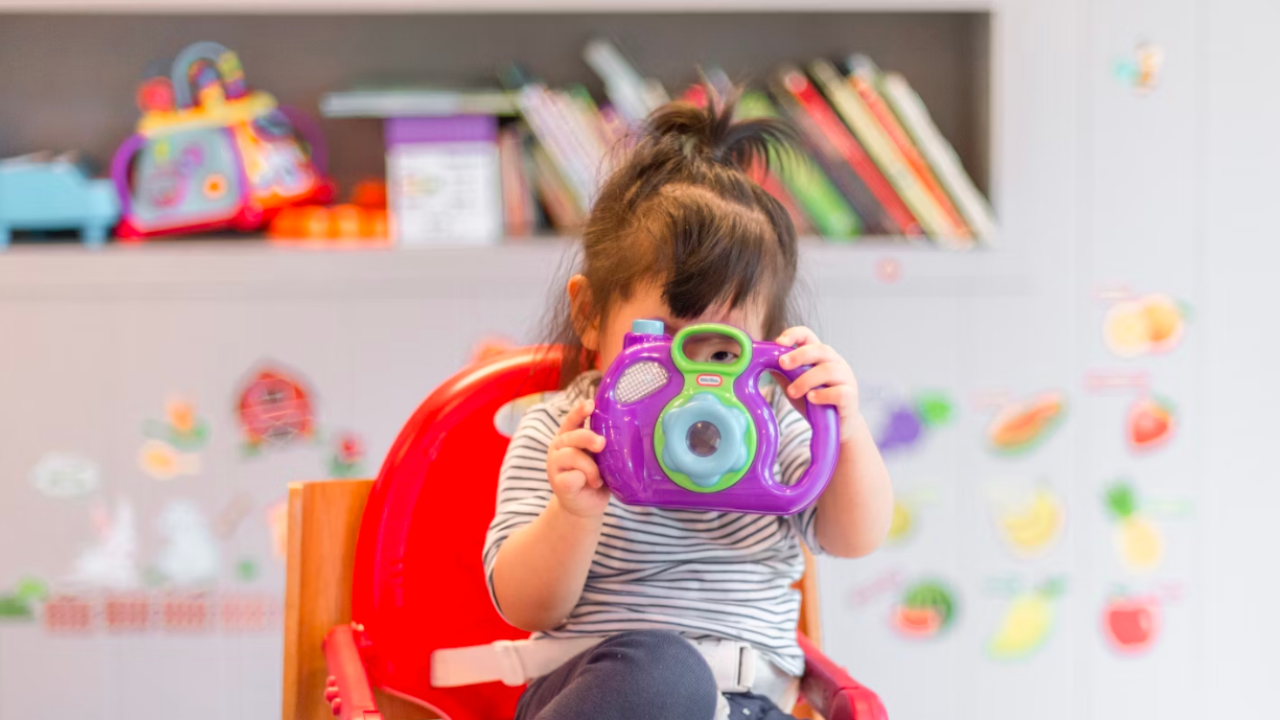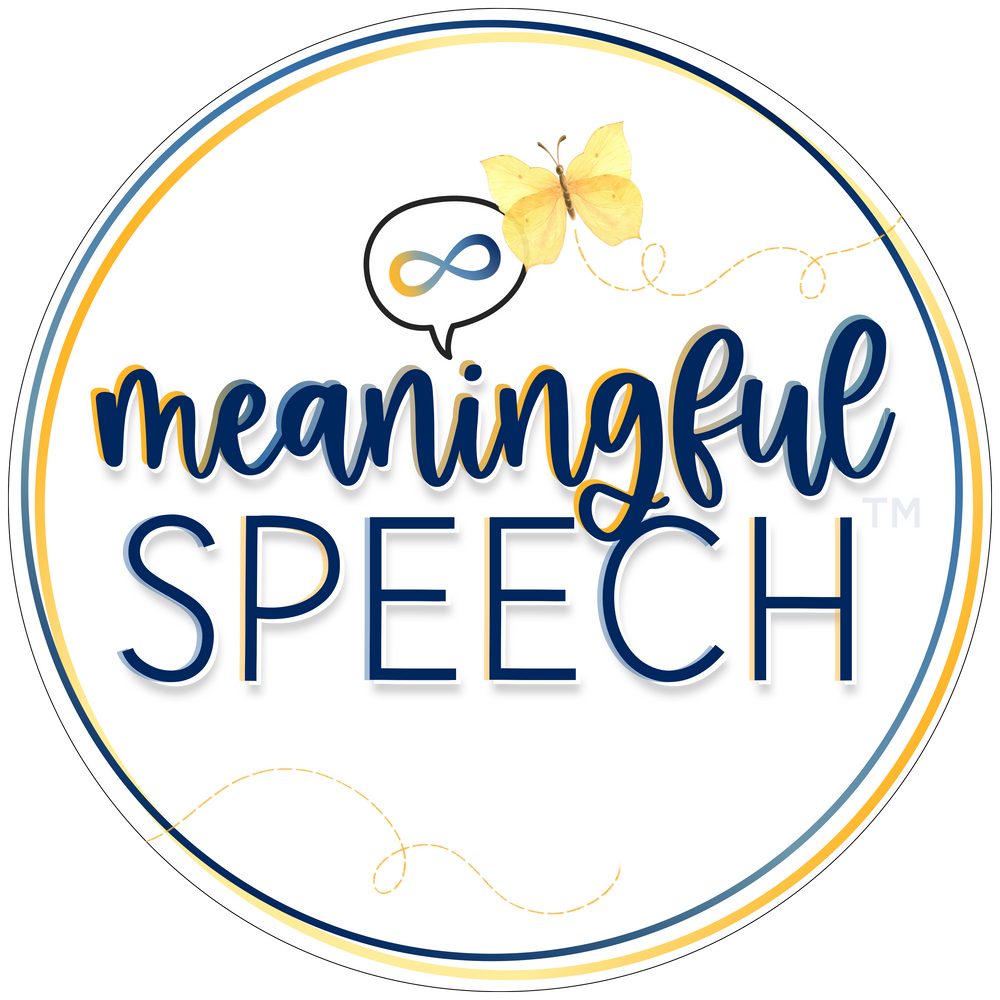What is child-led therapy?
Feb 26, 2025
Child-led therapy is often very different from what many therapists are taught and used to doing. This type of therapy can make some clinicians feel uneasy because it involves a lot of thinking on your feet. That’s okay, start slow. Focus on getting to know the child and less on making pre-planned activities happen.
P.S. We’re celebrating the 3-year anniversary of Meaningful Speech with a major sale! More information at the end of this post.
What is child-led therapy and why do it?
Child-led therapy is all about following a child's interests and allowing them to lead in your sessions. Rather than going into sessions with an adult-directed agenda, we enter the child’s world of play. Children will gravitate toward what they enjoy or what their body needs (jumping, crashing, etc). This means sessions are intrinsically motivating and meaningful for the child. This doesn’t mean that we have to use the same activities/toys in the same way every session or that we can never introduce anything new. Child-led therapy allows us to establish ourselves as a true play partner and form authentic relationships with the child that are built on trust and connection. Trust is foundational for our language models to be accepted by children.
How do you plan for child-led therapy?
You don’t! We’ll provide loose guidelines here to help those of you that are used to planning but, when it comes to child-led therapy there really is no planning. Again, this can make some clinicians feel uneasy because it involves a lot of thinking on your feet. For those clinicians, we recommend starting slow. Focus on getting to know the child and less on making pre-planned activities happen. Our biggest tip for homes and therapy spaces is to minimize. Store away things not being used and use the rule of three. This rule is that you should have no more than three toys or activities out at a time. These three toys or activities should include: two preferred toys/activities/sensory equipment, etc. that you know the child loves or benefits from and one new toy/item/equipment that is there if the child wishes to interact with it. There are no expectations for what the child will play with or do but they are all there for the child to choose from.
Ideas for child-led sessions for all children
Child led therapy can be used with clients of any age. Many of our gestalt language processors are still in stage 1 of gestalt language development at older ages. Not all children are ready for or interested in toy play and that’s okay! Not all play has to be with toys. Think about people play, sensory motor play and/or media for the kids you work with (or parent) that aren’t ready for toy play. Also, we shouldn't let the arbitrary idea of “age-appropriate interests” keep our clients from interacting with toys or engaging in activities that are of interest and meaningful to them. Below are some activity and script suggestions in different categories. This is by no means an exhaustive list.
- People play
- Hide and seek
- Ring around the Rosie
- Row, Row, Row your Boat
- Peek-a-boo
- Chase or tag
- Toy/Hobby Play
- Cooking and baking
- Snap Circuits
- Interactive board games
- Letter or number play
- Sensory-motor Play
- Pop-up tents
- Sports
- Trampoline
- Exercise balls
- Swinging
- Obstacle course
- Jump and crash
- Tickle chase
- Toy play
- Magnetic Tiles
- Train sets
- Kinetic sand
- Pretend Play
- Doctor kit
- Doll house and people
- Play food
- Creative Play
- Art supplies
- Musical instruments
- Charades
- Tech/Media Play (A lot of children are into tech and that’s okay! Showing interest in what the child is watching by commenting on it can speak conversation, build trust and allows for natural language modeling)
- YouTube clips
- Music
- Interactive apps
- eBooks
- Audio stories
Common reasons why a child may not respond to child-led therapy and what to do
- It’s not actually child-led, the adult is controlling most of the play and play decisions and/or the child is being offered materials/toys that they have no interest in. Follow the child’s lead. Bubbles? You got it. Balls? Here you go! Don’t force your ideas. Bring in those items of interest and a new item but always look to the child for direction.
- The child has never been given the chance to independently or free play and much like prompt dependence, is waiting to be told what to do. Some children have had a history of compliance based or “traditional” therapies and aren’t sure what to do. Give it time and be an encouraging, gentle and present listener.
- The child is dysregulated and overwhelmed due to the environment or internal or situational reasons. If a child is crying, refusing, crashing, pushing, hitting and/or you are worried about safety… consider regulation. We always recommend consulting with an occupational therapist well-versed in sensory processing if possible. We need to address regulation before we address communication. Children cannot pick up our language models with a dysregulated nervous system.
🎉 We’re celebrating our 3-year anniversary with a SALE! You can use the code “SALE25” (all caps) at check out for 25% off anything on our site, including bundles! This sale and the coupon will be valid until Midnight CST on Friday, February 28, 2025.
Want to learn more in-depth information about how to support gestalt language processors?
- If this resonates with you, we invite you to start by enrolling in our FREE masterclass on echolalia and child-led therapy. Over 33,000 parents and professionals have already enrolled for free.
- There are many free podcasts, webinars and articles to get you started. A comprehensive list of resources can also be found on our website.
- Consider taking the Meaningful Speech course to learn more about how your child or client processes language, how you can help support them from echolalia to self-generated (original flexible) language, child-led therapy, and neurodiversity-affirming practices. Looking for something shorter? We have a 1-hour introductory course perfect for extended family, daycare or school staff.
- Consider enrolling in our free Beginner’s Guide to AAC for GLPs or dive deeper into the topic by enrolling in our self-paced AAC + Gestalt Language Processing course. It will teach you how to identify, evaluate and support gestalt language processors who use AAC or who you think might benefit from AAC.
- Look for a speech-language pathologist (SLP) who "gets it" and can help you in supporting your child's language development. Check out our registry for SLPs who understand gestalt language processing and child-led therapy.
- Want to learn more about starting a niche private practice or using digital resources to support gestalt language processors? We have 1-hour webinars available on both topics HERE.
